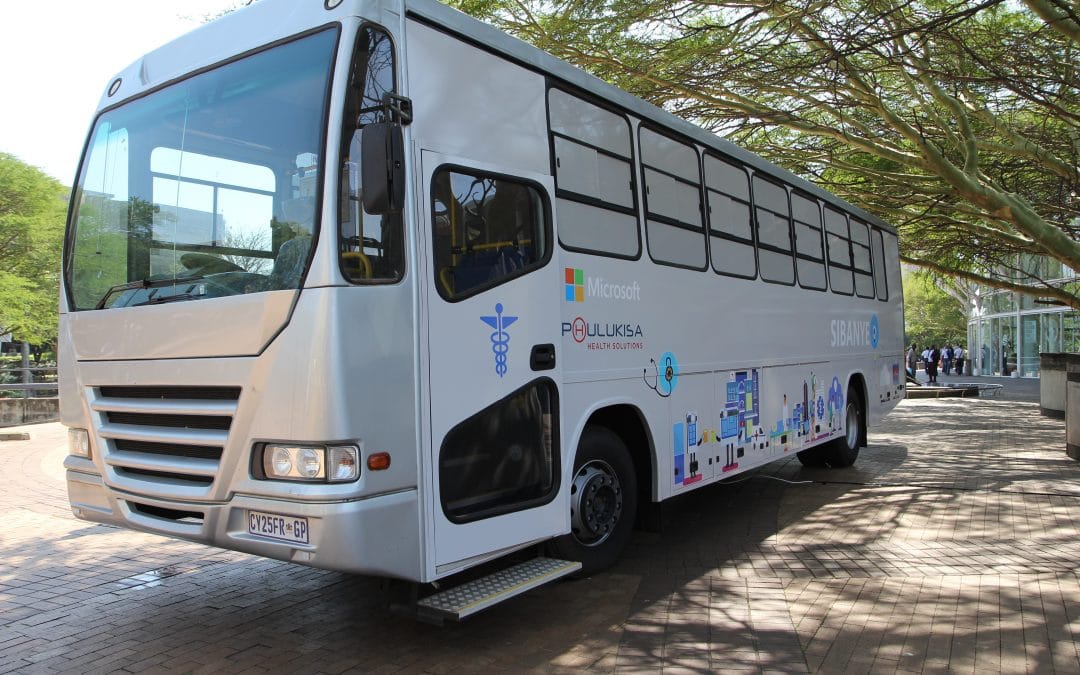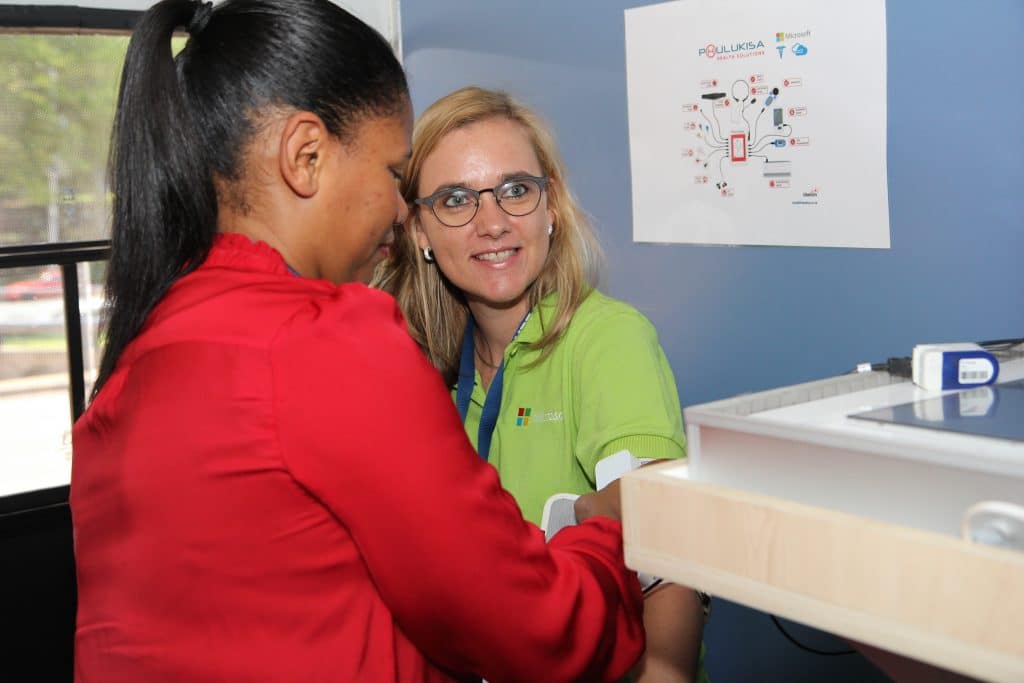By using an app and a bus, an innovative doctor is hoping to disrupt the primary healthcare market – enhancing patient care while decreasing the cost of care and helping government plan better around the footprint of primary healthcare clinics.
Urologist, Dr. Raymond Campbell has created a mobile medical solution which includes a bus that can be used to not only reach underserved communities through the country, but also to help government determine whether it is feasible to build a permanent clinic within a particular area.
“The medical bus will allow government, provincial departments and districts to better understand the health needs of communities, by being able to first test appetite for more permanent health services in an area, with the least cost in terms of infrastructure layout,” explains Dr Campbell.
He also helped developed an app within Phulukisa Health Solutions, which allows primary healthcare workers to remotely manage patients. They can electronically capture the medical informatics of patients such as their weight, body mass index, and blood pressure using IoT sensors and store these files in the cloud thanks to the app being built on Microsoft’s Azure cloud platform. These metrics feed into an algorithm which will flag only abnormalities and help to triage and escalate serious conditions.
The goal of the app and medical bus is to become a platform through which to screen the top seven preventable diseases in the country. According to Stats SA, the cumulative load of these may be as high as 70% of our adult disease burden, so this platform will transform health delivery for all.
“Technology is radically improving global healthcare through the digital transformation of the health industry,” said Warren Hero, National Technology Officer at Microsoft South Africa. “Focusing on patient outcomes through evidenced based decision making underpinned by technology will have a significant impact on the cost and value equations in healthcare. The potential of integrating big data, cloud and artificial intelligence to ensure access for all South Africans to quality healthcare is the basis for a sustainable, competitive nation.”
Reduced waiting time and cost of care for patients
Phulukisa’s Health App will also help reduce the waiting time for patients at clinics since they are triaged immediately and the results are always accessible through the cloud. By allowing clients co-custodianship of their records, no time will be lost searching for physical files or gathering information that has been lost for instance.
Another consequence of storing this kind of data in the cloud is that it will allow for continuity across different clinics and different clinicians, since each clinic and specialist will not have to open their own file on the patient. “We are very keen to help introduce a ‘one client, one number, one file’ type of model that works across cities and provinces,” said Dr Campbell. “When dealing with an ambitious project like rolling out more affordable healthcare to all South Africans, you need to have stable connectivity, ample capacity for storage and analytics, fantastic support and also very importantly, be compliant with local as well as international personal information legislation. We at Phulukisa are very comfortable that Microsoft represents the very best in what we were looking for in a partner.”
He adds that the cost per patient to do all of these kinds of tests on patients currently comes to around R480, and stated that this can be reduced to just about R120 per patient, via the mobile medical bus and app. This cost would include metrics special investigations like blood and urine tests as well.
Cutting down on the need for and the occurrences of duplication of testing will also result in additional cost savings. Patients receive a summary of their health analytics upon conclusion of the test by way of SMS.
After having analysed all the variables, patients are also ascribed a score of between 0 and 100, which translates as an output into Green, Orange or Red. Based on that colour, the patient either gets seen electively or immediately, which further relieves the burden on the attending doctors who see only booked or urgent clients. Currently, attending doctors see all of the patients because they have no way of determining beforehand, who is critical and who does not require immediate attention.



